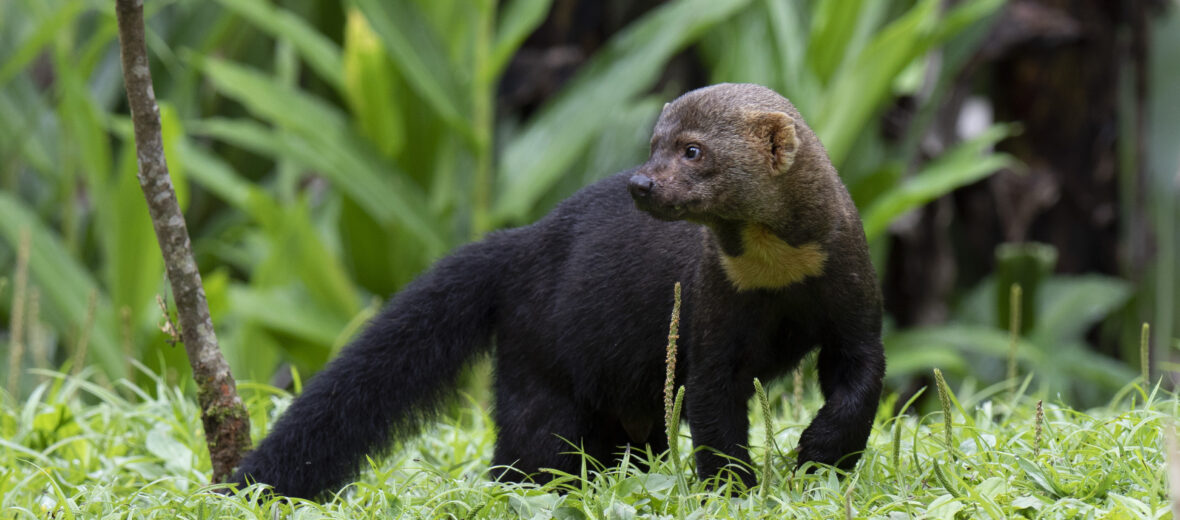
The tayra is a member of the weasel family. There are 9 known subspecies of tayra that range from Central and South America to Trinidad. Tayras live in woodlands and dense tropical rainforests. The locals use tayra for the control of pests, primarily because they eat rodents. The downside to this is that they also cause damage to the farms because they feed on sugar cane and poultry.
First the Stats…
Scientific name: Eira barbara
Weight: Up to 13 lbs.
Length: Up to 28 inches, plus their 18 inch tail
Lifespan: Up to 18 years
Now on to the Facts!
1.) Due to their wrinkled faces, the tayra are known as “Cabeza del Viejo” or “Old Man’s Head” among the locals.
2.) They are both arboreal (spend time in trees) and terrestrial (spend time on the ground).
3.) Tayras are nocturnal (active at night). They have also been documented as being crepuscular (active at dawn and dusk).
4.) The tayra is listed as a species of Least Concern by the IUCN, because their numbers are so great.
5.) Being vocal, they make barks, yowls, snarls, and clicking noises.
But wait, there’s more on the tayra!
6.) The tayra is considered an omnivore (eats plant and animal matter). They hunt small mammals like squirrels, mice, agoutis, tamarins, and also reptiles, insects, invertebrates, and will eat honey and fruit.
7.) Dogs, jaguars, eagles, and humans are the main predators of tayras.
Did you know…?
These critters are able to scale trees like a cat and swim as well as a fish!
8.) They make nests in hollow trees, in abandoned burrows, and in tall grass.
9.) These critters mate once a year. They are otherwise solitary creatures.
10.) After a 63 – 70 day gestation period, tayras give birth to a litter of 2 – 3 young. The young are nursed for 2 – 3 months.
Now a Short Tayra Video!
Also, check out the Critter Science YouTube channel. Videos added frequently!
Want to suggest a critter for me to write about? Let me know here.



